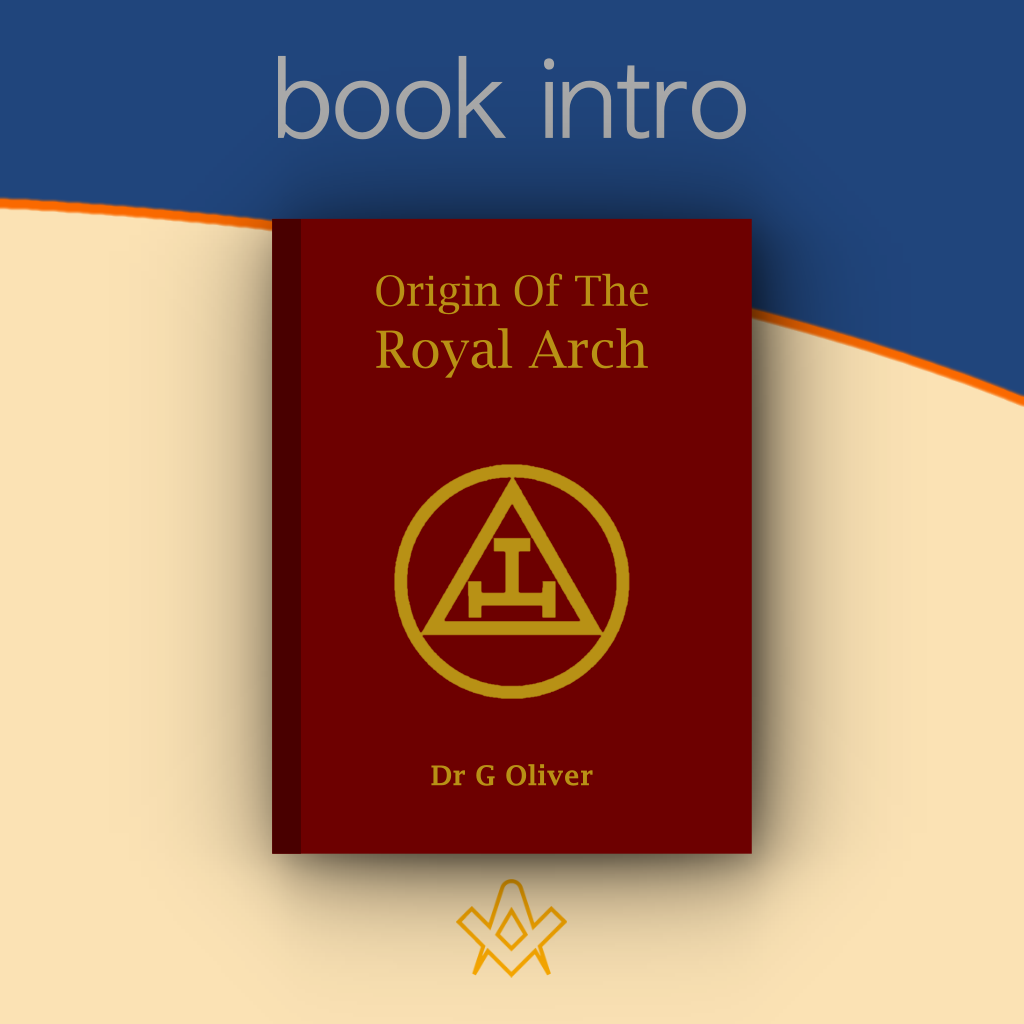The Work now offered to the Masonic public in a new and improved form originated in an extended private correspondence with one of the most eminent Masons of the day, on the terms of an article in the Freemasons’ Quarterly Review, the gist of which is contained in the following passage : —
Previous to the commencement of the eighteenth century, the Royal Arch has not been traced with any plausibility.
But it is to be hoped that someone will take up the subject; for if the Royal Arch can be proved to have been invented so lately even as two hundred years ago, it must be considered as a modern degree. . . .
If it be really ancient, the records of one or more of its many Lodges or Chapters may establish its long existence in England as easily as in the case of St. John’s Masonry.
But, whatever be the result, let the investigation be conducted with accuracy, and a desire to clear up the truth.
My explanations were considered of sufficient importance to merit publication; and I was earnestly requested to consolidate the subject matter of the correspondence, and to submit the result to the judgment of the fraternity at large.
The verdict has proved favourable, and a second edition has been called for in England, after the work had already passed through three Editions in the United States, and has been quoted and requoted in all the publications on the subject in that quarter of the globe.
In order to render the present edition more worthy of general approval, of which its reception amongst the fraternity will be the most conclusive test, I have not only arranged its contents in a more regular and scientific form, by which a reference to the several particulars may be easily accessible, but have added five new and interesting chapters on the ritual and ceremonies of the Third Degree as they were used by the seceding Masons in 1740, and which constituted the germ of our present Royal Arch.
I have also added an intelligible description of the two degrees which they subsequently interposed between the Geometrick Master and the Royal Arch, with copious extracts from the Excellent and Super-Excellent rituals; as well as from certain portions of Bro. Dunckerley’s version of the new degree, as introduced by himself into the Constitutional Grand Lodge; all of which have become obsolete, and are very little known at the present time, although tending to illustrate the connection between Craft Masonry and the Royal Arch.
These additions, which place the entire subject before the reader’s eye, will render the volume of inestimable value when all recollection of the spurious ceremonies shall have passed away from human memory; and cannot fail to excite the curiosity of every brother and companion [1] who entertains any portion of respect for that beautiful system of morality which is veiled in allegory, and illustrated by symbols.
The manuscript in my possession containing the Ritual of the Rite ancient de Bouillon, which constituted the nucleus of our Royal Arch order, commences thus : —
There is no society of men, nor any craft or guild that can be compared with the order of Freemasonry, which, it must be confessed, is of great antiquity, even so early as the days of King Solomon.
For King Solomon employed a great many workmen of the surrounding nations to build the holy temple of Jerusalem; and he imparted unto them, as well as to his own people, the Israelites, the mysteries of the Craft; that they might prove themselves worthy of good wages in all countries of the earth; and practice all justice and virtue before God and men.
But in process of time, kings and princes desired to learn the mysteries of this ancient society; and being initiated therein, because of their high and mighty dignity, sought admittance also for their favourites; and they in turn taught the mysteries unto their kindred, so that the order passed almost out of the hands of its first holders into those of noble blood and gentle birth.
Thus that which was simple and rude was made learned and gentle; and that which was at first easy was made rugged, after the manner of the men who held rule.
But it was not until Godefroy de Bouillon delivered Jerusalem that the brethren of this ancient society perceived how far they had departed from original simplicity and truth; as presenting themselves before their brethren at Jerusalem, it was found that certain strange things had crept into the mysteries which were never done nor heard of at Jerusalem, and concerning which things all their traditions testified against.
So that the return of the Crusaders introduced once more into Europe the pure and simple mysteries of Jerusalem, and they are these which have been preserved even until now.
The order of Freemasonry consists of three grades, namely; the first of which is the Apprentices; the second is the Fellow craftsmen, and the last and most sublime of all is the Master Masons, and within these three degrees are enclosed all that pertaineth and tendeth to man’s good; to wit, his duty to God his Creator, his duty to himself and his family, and his duty to his neighbour, which is all mankind.
As there are three degrees in this ancient society, so there are also three superior officers who rule therein.
The first of whom is called the Master, the second is the Senior Warden, and the third is the Junior Warden; and these three are assisted by three others, namely, the Senior Deacon, the Junior Deacon, and the Inner Guard. [2]
A meeting of the fraternity is called a Lodge; but there is a Lodge for apprentices, and a Lodge for fellow craftsmen, and a Lodge for master masons, and he who is a master mason finds entrance in all, but the fellow-craftsmen may enter only where fellow-craftsmen and apprentices work; and the apprentice only where he may gain entrance.
A Lodge of apprentices and fellow-craftsmen consists but of three superior and three inferior officers already named, with a tyler who keeps watch outside; but in a Lodge of master masons there are superadded two other officers, a Treasurer and a Secretary.
Now, the forementioned officers stand as representatives of the first persons who held a Lodge in Jerusalem; namely, Hiram Abiff, the Master workman; Adoniram, his Senior Warden; Joabert, his Junior Warden; Stolkin, his Senior Deacon; Issabud, his Junior Deacon, and Zerbel, the Inner Guard.
The Tyler represents Ahishar, a faithful brother, who kept watch for the brethren in Jerusalem.
In the Master Mason’s degree, the Master represents King Solomon, the Senior Warden King Hiram, and the Junior Warden Hiram A biff, the skilful workman.
The Treasurer represents Adoniram, and the Secretary Joabert. Before any one may speak concerning the mysteries, the Master must take his seat, which is always in the East of the Lodge; and because he can have no superior, he must remain covered; and until it shall be made known unto him that the Lodge is safe and secure, by scrutiny within, and vigilance without, he may himself not speak of the mysteries.
In this edition I have also added much useful information in the discursive notes with which it is enriched.
The subjects of these notes are various, and arise spontaneously out of the text as a scientific explanation of every important difficulty.
I remember very well, though it is more than sixty years ago, the dead lock which frequently occurred to me when I first entered on the study of Masonry, by the absence of books of reference.
This deficiency I have in a great measure supplied; and I have not been chary in explaining the arcane reference of the symbols and other insignia in my various Masonic publications.
In the present instance I have been influenced by a twofold motive. First, to place the Royal Arch order on its legitimate basis; and secondly, to furnish the reader with all the information respecting its origin and elementary principles which study and reflection, augmented by a competent knowledge of the continental systems, has enabled me to collect together.
And here it may be useful to remark, that there exist amongst us a few brethren who entertain grave doubts respecting the propriety of making public any collections of literary or philosophical facts and arguments relating to Freemasonry; and contend that nothing whatever ought to be written or printed, even respecting its general design, but that every brother should carefully conceal within his own bosom, not only its peculiar secrets, which he is bound by the most solemn obligations to do, but also every one of its points, parts, and routine transactions, and leave the outer world at liberty to draw its own conclusions, how unfavourable soever they may be.
In the last century, before the literary period of Masonry commenced, the conjectures respecting our proceedings in private conclave were frequently founded on the most absurd and ridiculous fancies.
Some believed that the Masons were magicians, and had secret dealings with his Satanic majesty.
Others had a wholesome dread of the red-hot poker. And there were opinions afloat still more offensive, which I shall not even allude to; amongst which, however, I may notice the senseless cry of infidelity first promulgated by the Abbe Barruel.
These fallacies have been completely dissolved by the spread of Masonic literature, which has also had the effect of reducing the class of murmuring cowans and captious brethren to a very insignificant minority.
Like the fierce opposition which attended the first introduction of steam and gas, the hostility of this section has in a great measure given way, and a more liberal principle substituted in its stead.
The times in which we live are too enlightened to endure the existence of such an exclusive feeling.
In proof of the benignant effects of a free exposition of the philosophical principles of the Order, it will only be necessary to show the abundant increase in the number of Lodges and Brethren, during what I have denominated the literary period of Masonry, which began at the Great Union of the Ancient and Modern sections of the Order in 1813.
This will constitute a clear and indisputable proof of the benefits which the Order has derived from the spread of Masonic literature.
In the Freemasons’ Calendar for 1867 I find the following statistics : —
From 1720, about which time the first warranted Lodge appears to have been established, to 1730, there are 32 Lodges on the list, while in the corresponding decade from 1820 to 1830, the new warrants issued were 43.
After this period, when Masonic literature began to spread and flourish by the establishment of the F.Q.R., the numbers indicate an abundant Comparative increase.
For instance, from 1730 to 1740 the list contains 35 new Lodges, while from 1830 to 1840 there were 58 Warrants issued.
Again in the succeeding period from 1740 to 1757 only 33 warrants were apparently granted, but in the succeeding century from 1840 to 1857, the largely increased number of new warrants was 231.
From 1757 to 1767 there appears to have been an increase of 62 Lodges, while the decade 1857 to 1867 exhibits a crowning augmentation of 442.
The result of this investigation shows that in the century that intervened between the revival in 1717 and the union in 1813, completed in the year 1820, there appear 861 Lodges on the list, while in the 46 years between 1820 and 1867, the literary period of Masonry, there are 779, making a grand total of 1,140; while, in the same space of time the Royal Arch Chapters have been trebled, .and amount at present, according to the same authority, to 345.
Now assuming the average number of brethren in each Lodge to be 50, we shall have a total of 1,850 initiations in the literary period of 46 years; and taking the sum of all the Lodges under the English Constitution at the same average, we realize a total of 57,000 Masons in England and Wales, who are actual members of Lodges, and whose annual payments to Grand Lodge at two shillings each, exclusive of the fees for new warrants, registrations, certificates, and other imposts, amount to the sum of £5,700.
With this income the Governors of the Grand Lodge are enabled to accomplish a great amount of good.
They have established, since the literary period of Masonry commenced, a Benevolent Fund; another for the relief of the destitute widows of deceased brethren, and a third for the casual relief of the unfortunate and distressed members of the community; besides an annuity system for the most prominent cases of destitution.
They have erected a noble building for the reception of worthy, aged, and decayed Freemasons, and two magnificent edifices for maintaining, clothing, and educating the orphan male and female children of decayed members of the Craft, all of which are supported by princely endowments.
And I may further state the important fact that the children of both sexes who have been trained and educated at these schools have uniformly become good and worthy members of society, and useful in their generation.
An exemplification of the same fact, that the spread of Masonic literature tends to augment the popularity of the Order, and to increase its numbers and means of doing good, may be further estimated by a consideration of the statistics of Masonry in the United States of America, where its literature is more highly prized and more extensively patronized than in this country, and consequently its Lodges, instead of being counted by units, and its brethren by tens, as amongst ourselves, the former may be numbered by tens, and the latter by hundreds.
Every important village in that vast continent has its Lodge, and every state its independent Grand Lodge.
It is not my intention to enter on a detail of American statistics (in fact this is not the place for such an inquiry, nor are the materials at hand to make it satisfactory and complete), but in order to show the magnificent scale on which Freemasonry is conducted in the New World, I subjoin a sketch of a Grand Masonic meeting that was held in the city of Baltimore on the 20th of November, 1866, for the purpose of levelling the foot-stone of a Masonic Temple, which is designed to exceed in dimensions and elegance of decoration all other Masonic structures in that country.
The report of the meeting is before me, and it occupies eight closely-printed columns of the Baltimore Sun.
It states that at an early hour in the morning of that day the principal streets were crowded with an immense populace, both male and female, from every part of Maryland and the adjacent states, to witness the pageant and the proceedings.
The high respect entertained for the Masonic Order, the character of its brotherhood, and its beneficent objects, together with the expected splendour of its emblematical insignia and forms, all conspired to excite the interest of the public and make them anxious to be present on such an extraordinary occasion.
The preparations were elaborate and the procession gorgeous. The almost incredible number of seventy-six Lodges and Commandaries were present, including the officers of three Grand Lodges, and an aggregate of three thousand three hundred and thirty brethren, several of the Lodges having appeared with upwards of a hundred members in their train.
The Craft Masons appeared in full black suits, high black hats and white gloves, with the appropriate collars, aprons, jewels, and regalia.
The Knights Templars wore their rich black uniforms, showy belts, and highly burnished swords, many of them decorated with costly jewels, chapeaus and white flowing feathers, and altogether the appearance was most magnificent.
The procession was honoured by the presence of the President of the United States, and the Governor of the State of Maryland, accompanied by his staff, all of whom took their places in the procession.
This noble demonstration, I should think, would be unparalleled in the annals of Masonry.
I have given this brief statement for the purpose of showing the Masonic enthusiasm that animates the fraternity in that great nation, which collected together such a numerous attendance of brethren, and induced them to stand four mortal hours at the latter end of November to witness the proceedings and to hear the hymns, the prayers, and the oration which took place during the ceremony.
This will contribute to prove the essential advantages which have been derived in that flourishing Republic from a free publication of Masonic literature, for in every part of the continent periodicals and other more permanent works, which treat exclusively on Masonic subjects, are numerous, and extensively patronized by the Craft; and few private Lodges exist in that quarter of the globe which have not a Benevolent Fund attached to them, independently of the general Fund of Charity administered by the several Grand Lodges.
I have now said enough in behalf of Masonic literature, and I turn to another subject which I consider of still greater importance, embracing the present opportunity because it is scarcely probable, at my advanced age, that another will occur, of repeating my firm and unshaken conviction that Freemasonry is a Christian institution, established by Christian men, and embracing Christian principles; a truth which may indeed be gathered from any of my numerous publications on the subject of Masonry.
My faith in this respect commenced at my initiation, when I was only eighteen years of age, and has remained unshaken through a long and eventful life, and I rejoice in the opportunity of publicly professing the same faith at the age of eighty-five years.
I do not deny that its ceremonies bear a reference to the Tabernacle of Moses, and the Temples erected by Solomon and Zerubbabel; but these edifices, and the rites and observances performed within their courts, were intended merely as signs and symbols to prefigure a better and more perfect dispensation, and afford no valid argument to prove Freemasonry to be a Jewish or even a latitudinarian institution, as some of our opponents have boldly and mistakenly declared.
To this effect the editor of a certain periodical has taken occasion more than once in the columns of his publication to stigmatize Freemasonry as an infidel institution, because (as he in his ignorance assumes) we exclude all reference to Christianity from our ceremonies.
This assertion, however, is perfectly gratuitous, as I have already shown in my reply to the recent Papal allocution, and it would afford me infinite pleasure to convince the writer, in Christian charity, of his mistake; although I am not ignorant that when a prejudice has taken possession of the mind, however fallacious or unfounded it may be, the difficulty of removing it is almost insurmountable; but I should rationally suppose that the various classes of society which have identified themselves with the Order, from the throned monarch to the humble working man, through every grade of rank and station, almost all of whom are Christians, would of itself form a sufficient proof that the above assertion is not founded in fact.
If the editor really believes Freemasonry to be an anti-Christian institution, I do not find fault with him for warning his readers to avoid its snares, but I would earnestly advise him to make himself morally certain, by the strictest and most impartial investigation, that his assertions are correct before he ventures to repeat them; for as a theological writer he cannot be ignorant that a day will certainly come when he will be called to a severe account for all his unfounded misrepresentations of Freemasonry.
But I hope to see him in a better mind. And to produce this effect I take the liberty of assuring him, in the words of a worthy brother clergyman in the United States, that (I quote from memory) ” Speculative Freemasonry, as it is practised in Craft Lodges and Royal Arch Chapters, is a system that embraces the whole duty of man as a moral being, comprising a summary of principles in which the great outlines of the history of creation, providence, and redemption are unfolded.
The primitive innocence of man, the fall and consequent scenes of natural and moral evil; in a word, the history of nature and grace, is most beautifully prefigured in a lively display of appropriate symbols, by which we may trace the coincidence of principle and design between the Christian scheme and Speculative Freemasonry, proving most clearly that the latter system is based on the truths of divine revelation, including a view of the deep mysteries of that Holy Being, in whom dwells the fulness of the Godhead bodily, even Jesus Christ the Son of God.
It also exhibits the terrible majesty of Him that rideth upon the heavens by his name Jah, who plants his footsteps in the sea and directs the storms.
Such are the boundless displays of the unsearchable riches of divine benevolence, which devised and executed the sublime plan of man’s redemption.
The mind is further presented in Speculative Freemasonry with a vivid picture of the coequal and coeternal existence of the adorable persons in the Sacred Trinity.
These are the principles of Masonry, as it is understood by all right-minded brethren in every part of the world.
And yet the institution is publicly accused by cowans and anti-masons, who envy the innocent enjoyments which they are too narrow-minded to practise, of “repudiating the Divine Founder of our religion, by omitting the name of the Great Intercessor in prayer; and that consequently Freemasonry lends to Christianity no help whatever.”
These asseverations, however, refute themselves, for it is a well-known fact that the numerous prayers of Masonry are uniformly sealed by an invocation to T.G. A.O.T.U., or, in other words, to Jesus Christ the Maker of the world and the Redeemer of mankind, in whose holy name our Lodges are opened and closed; and the most ancient Masonic prayer that we are acquainted with, as it was used in our Lodges in the reign of Edward IV., is as follows: —
“The mighty God and Father of Heaven, with the wisdom of His glorious Son, through the goodness of the Holy Ghost, three Persons in one Godhead, be with us at our beginning, give us grace to govern us in our living here, that we may come to His bliss that shall never have an end.”
Does this sound like disowning Christ? Is this an anti-Christian practice?
Why, the Lectures of Masonry are essentially Christian from end to end, and there is scarcely a type of Christ in the Old Testament which has not been introduced into them. [3]
In the Constitutions of Athelstan, who was the first founder of Freemasonry in this country, the same Divine Personage is frequently appealed to as ” the Great Intercessor,” and it contains many passages that display the Christian animus by which our ancient brethren were influenced in its composition.
The very first point explains the chief ground of a Mason’s practice thus : —
“Primus Punctus. He that would well and truly learn this Craft, must love God and His holy Christian Church.”
Indeed these Constitutions exhibit throughout an abundance of evidence to show that Freemasonry was then considered to be exclusively a Christian institution, and I am not acquainted with a single instance, till very recently, where this important truth was called into question.
Now, should any one doubt whether the Redeemer of mankind is rightly identified in Freemasonry with T.G.A.O.T.U.
I would tell him that St. John the Evangelist, one of our traditional patrons, plainly asserts that the second person in the Trinity was the builder of the world, in these words : —
“All things were made by Him, and without Him was not anything made that was made.” [4]
And St. Paul adds that ” Christ made the worlds,” and exclaims, ” Thou Lord, in the beginning, hast laid the foundations of the earth, and the heavens are the work of thine hands.” [5]
If we attach any credit to the opinions of these two inspired men, that Jesus Christ, or, in other words, Jehovah, [6] whose sacred name embellishes our Grand Lodge Certificate, was the builder and maker of the universe and all things therein, we cannot reasonably deny that He is T.G.A.O.T.U., acknowledged in the system of Freemasonry.
Our sacred writings, which constitute the First Great Light of Masonry, contain an abundance of evidence to the same effect; for “the Son, by whom, in these last days, God spake unto us, wile by whom also He made the worlds;” so that as “through faith we understand that the worlds were framed by the Word of God ” [7] so must we also believe that they were made by the Son of God, ” the firstborn of every creature : for by Him were all things created that are in heaven and that are in earth, visible and invisible; whether they be thrones or dominions, or principalities, or powers : all things were created by Him and for Him. And He is before all things, and by Him all things consist” [8]
The fact being thus undeniably established, a few dissentients in the Masonic body, in order to neutralize its force, contend that ” all this was altered at the Union; and the above title transferred from the Second to the First Person in the Trinity.”
I should like to see the authority for this assumed change; because it was distinctly provided in the third Article of the Union, that ” no alteration whatever should be permitted; ” and if such a change were sanctioned at that period, how does it happen that it was kept a profound secret from the Craft for nearly half a century, until revealed by an anonymous writer in the Freemasons 9 Magazine, A.D. 1858?
But the cowan further asserts that “Freemasonry does not render any help to Christianity” which may require a brief reply.
Does he mean to infer that Christianity needs human assistance to ensure its perfection and prosperity ?
Does he intend to affirm that no society can be Christian which does not afford that assistance ?
Such an idea is singularly absurd; for in carrying out the principle we should be bound to believe that our public hospitals, insurance companies, sick and benefit clubs (which abound in every town and village under one denomination or another), and charitable societies of every description are anti-Christian.
In a word, the test would include, in one universal sweep of condemnation, all our noble institutions, save and except those which are exclusively devoted to the inculcation of the Christian religion.
But is it really true that Freemasonry fails to contribute such collateral aid to our holy religion as may be humbly afforded by a society purely human ?
I have already said that it was founded by Christian men for a Christian purpose; I now add that it embodies a series of Christian types, which are explained in its rituals on Christian principles; its doctrines and duties are framed on Christian models; it is acknowledged and protected by Christian laws; and therefore I am at a loss to understand how it can be truly pronounced an anti-Christian institution.
I now take my leave — Liberavi animam meam; although it is to be feared that notwithstanding this plain exposition of our principles, the defamers of Masonry will still continue to repeat their denunciations.
Dear and loving Brethren, farewell,
And may God be with you all.
GEO. OLIVER, D.D.
Lincoln, England. 1867.
Footsnotes
References
1 “The members of this degree are denominated Companions, and are entitled to a full explanation of the mysteries of the Order; whereas, in the former degrees they are recognized by the familiar appellation of Brothers, and kept in a state of profound ignorance of the sublime secret which is disclosed in the Chapter. This accords with the custom of Pythagoras, who thus distinguished his pupils: After a probation of five years they were admitted into the presence of the preceptor, called his companions, and permitted freely to converse with him. Previously to the expiration of that term, he delivered his instructions to them from behind a screen.” — Fellows Enquiry into the Origin, History 9 Purport of Freemasonry, p. 321.
2 This mention of deacons reflects considerable discredit on the presumed antiquity of the Bite de Bouillon, because there were certainly no deacons in primitive Masonry.
3 See my Reply to the Papal Allocution, passim.
4 John i. 3.
5 Heb. i. 10.
6 See my Reply to the Papal Allocution, passim.
7 Heb. i. 2, xi. 8.
8 Col. i. 15, 16, 17. I subjoin the following authorities from Whitby to show that there is no lack of evidence in demonstration of the important fact that Jesus Christ is truly T. G. A. O. T. IT. St. Barnabas declares that Christ is the Lord of the world, the maker of the Sun, the person by whom are all things. Justin Martyr says, that the earth, the heavens, and every creature were made by the Word. This Irens-Bus delivers as the rule of faith contained in the Scripture, to believe in one God, the maker of heaven and earth and of all things therein, by Jesus Christ the Son of God. Our doctrine, saith Athenagoras, celebrates one God the creator of all things, who made all things by Jesus Christ, from whom and by whom all things were made. God, saith Theophilus, made all things by Him, and He is called the beginning because He is the principle and ruler of all things made by Him. And Tatian adds, we know Him to have been the author of the world, for that which was begotten in the beginning gave beginning to the things made; He made man the image of his immortality, and before man He made the angels. We rational creatures, as Clement of Alexandria observes; are the work of God the Word, for He was and is the divine principle of all things, by whom all things were made. We learn the same from many other of the ancient fathers.
9 See the Freemason*’ Magazine for Jan. 1858, pp. 70, 72.
About The Author
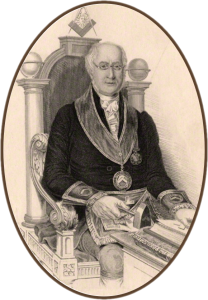 Dr G Oliver (1782–1867)
Dr G Oliver (1782–1867)
He was eldest son of Samuel Oliver, rector of Lambley, Nottinghamshire, by Elizabeth, daughter of George Whitehead, of Blyth Spital in the same county. He was born at Papplewick, Nottinghamshire, on 5 November 1782, and, after receiving a liberal education at Nottingham, he became in 1803 second master of Caistor grammar school. Six years afterwards he was appointed to the headmastership of Grimsby grammar school.
Oliver was ordained deacon in 1813, and priest in 1814; and in July 1815 Bishop George Pretyman Tomline collated him to the living of Clee, when his name was placed on the hoards of Trinity College, Cambridge, by Dr Bayley, subdean of Lincoln and examining chaplain to the bishop, as a ten-year man. In 1831 Bishop John Kaye gave him the rectory of Scopwick, Lincolnshire, which he held till his death. A Lambeth degree of D.D. was conferred on him 25 July 1835.
From 1834 to 1846 Oliver was perpetual curate of St Peter’s Collegiate Church, Wolverhampton. He was also domestic chaplain to Lord Kensington. He had been appointed Deputy Provincial Grand Master of Lincolnshire in 1832, and in 1840 he was appointed an honorary member of the Grand Lodge of Massachusetts, with the rank of deputy grand master.
In 1846 Lord Lyndhurst, the Lord Chancellor, conferred on Oliver the rectory of South Hyckham, Lincolnshire, in return for vacating the curacy of Wolverhampton. In 1854 his voice began to fail, and, confiding the charge of his parishes to curates, he passed the remainder of his life in seclusion at Lincoln. He died there on 3 March 1867, and was buried with Masonic rites on the 7th, in the cemetery attached to the church of St. Swithin.
Recent Articles: in this series
 Book Intro: The Secret Doctrine Explore the profound synthesis of science, religion, and philosophy in H.P. Blavatsky's "The Secret Doctrine." Discover the true depth of Theosophy beyond the oversimplified term "Esoteric Buddhism" and uncover the universal wisdom that transcends religious boundaries. A compelling introduction to Theosophical literature and its broader, esoteric truths. |
 Book Intro - The craftsman and freemason's guide Dive into the enigmatic world of Freemasonry with Cornelius Moore's comprehensive guide. Uncover the symbolic rituals, trace the fraternity's historical roots, and gain a deeper understanding of this age-old society. Perfect for Freemasons and curious readers alike. Unlock the secrets of Freemasonry today! |
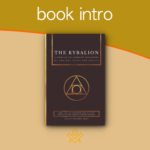 Unravel the secrets of the ancient Egyptian wisdom with our comprehensive guide to the Kybalion, by Three Initiates. Discover its influence on modern thought, the controversies surrounding it, and its seven profound Hermetic principles. Unlock the power of these timeless teachings to transform your understanding of life's mysteries. |
 Book Intro - The Working Tools of an Old York Master by Wilmshurst Unlock the Secrets of Freemasonry! Dive into the profound symbolism of 'The Working Tools of an Old York Master.' Discover the hidden meanings behind the square, compass, plumb line, and more. Embark on a transformative journey of personal growth and spiritual enlightenment. Uncover the ancient wisdom that has shaped generations of Masons. |
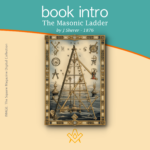 Book Intro - The Masonic Ladder by J Sherer Unlock the mysteries of Freemasonry with "The Masonic Ladder" by J. Sherer - - 1876. This 19th-century guidebook takes readers on a journey through the steps of the Masonic ladder, from the basic principles of the Entered Apprentice to the highest degree of the Sovereign Grand Inspector General. Discover the symbolism, allegory, and values of Freemasonry in this timeless classic. |
 Book Intro - The London mason in the seventeenth century The London Mason in the Seventeenth Century by Douglas Knoop offers a comprehensive examination of the lives and work of masons in the bustling city of London during the seventeenth century. The book delves into the intricacies of their craft, the socioeconomic and political forces that influenced their profession, and the role they played in shaping the architectural landscape of London. |
 Book Intro - History of Freemasonry, Gould, Robert Freke The History of Freemasonry is a comprehensive overview of the origins, development, and evolution of Freemasonry from its ancient roots to the modern era. The book explores the fascinating history of one of the oldest and most mysterious organisations in the world, which has been the subject of much speculation and curiosity over the centuries. - by Robert Freke Gould |
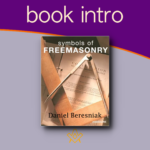 Book Intro - Daniel Beresniak Symbols Of Freemasonry This book is a collection of the symbolic images which Freemasons encounter on their journeys of transformation.' The texts and illustrations form an intimate dialogue whose subject is Freemasonry, and which casts light on the relationship between dreams and reality, reason, intuition and imagination. |
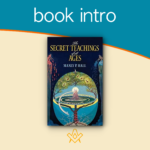 Book Intro - The Secret Teachings of All Ages by Manly P Hall The Secret Teachings of All Ages by Manly P Hall is a comprehensive and in-depth exploration of the various esoteric and occult traditions that have shaped human history. The book covers a wide range of subjects including alchemy, astrology, mysticism, and secret societies, and provides detailed explanations of the underlying principles and concepts. |
 Book Intro - Duncan's Masonic Ritual and Monitor Duncan's Masonic Ritual and Monitor is an impression of the Old York Rite published in New York in 1866. |
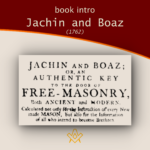 Book Intro - Jachin and Boaz (1762) Thirty two years after Samuel Prichard's Masonry Dissected (1730) a second detailed exposure was published Jachin and Boaz (1762) attributed to the same author, and met with equal distain by Freemasons of the time. However, these exposures offer the masonic historian an invaluable view in to how freemasonry was conducted during its early formation |
 Book Intro - Three Distinct Knocks (c.1760) Giving an exact account of all their proceedings in making a brother, with the three obligations or oaths belonging to the first second, and third degrees of masonry, viz. The entered apprentice, fellow-craft, and master-mason: with the obligating on belonging to the chair, and the grip and word. |
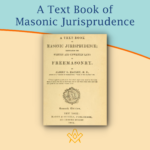 Book Intro - A Text Book of Masonic Jurisprudence An introduction to Albert Mackey's seminal work on Masonic Jurisprudence – the theory or philosophy of Masonic law. The Foundations of Masonic Law are to be found in the Landmarks, or Unwritten Law, and in the Ancient Constitutions, or the Written Law. These constitute the subject matter of the book. |
 Book Intro - The Perfect Ceremonies Of Craft Masonry 1871 A beautiful example of a the rituals, produced in a Medieval illuminated script style. Facsimiles still exist of this illustrated ritual book, of which the most authentically produced version is that available from the Scottish Rite Masonic Book Club. |
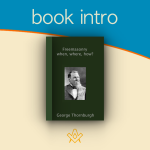 Book Intro – Freemasonry; when, where, how? Introduction to Freemasonry; when, where, how? By George Thornburgh |
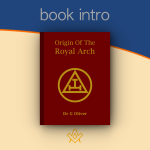 Book Intro - Origin Of The Royal Arch An introduction to the Origin of the Royal Arch, through the eyes of the English nineteenth century masonic author Dr G Oliver (1782–1867) |
 Book Intro – Symbolical Masonry Symbolical Masonry is a treasure-house of Masonic lore, including discussions of key concepts of the first three degrees, along with an extensive study guide. |
 This month we look at – 'A portrait gallery, with biographical sketches of prominent freemasons throughout the United States' |
 Extracted and abridged from The Mystic Tie: Or, Facts and Opinions, Illustrative of the Character and Tendency of Freemasonry By Albert Mackey, |
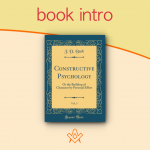 Book intro - Constructive Psychology The introduction to Constructive Psychology or The Building Of Character By Personal Effort by J D Buck a masonic author |
 book intro - Cagliostro: the splendour and misery of a master of magic Preface to the book by William Rutherford Hayes; Cagliostro: the splendour and misery of a master of magic |
 book intro - Origin of the Rosicrucians and the Free-Masons Historico-Critical Inquiry into the Origin of the Rosicrucians and the Free-Masons – Thomas De Quincey |
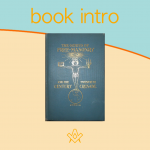 Book Intro - The Genius of Freemasonry The Genius of Freemasonry: “Has any brother anything to offer for the good of Masonry?” The following pages are the author’s answer to that question. |
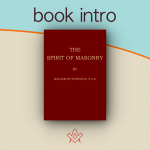 Book Intro - The Spirit of Masonry An essential source for anyone interested in exploring the inner mysteries of the Masonic Fraternity. |
 Book intro - History of Freemasonry Introduction to a classic masonic book by J. G. Findel, History of Freemasonry published 1866 |
 The Book of Constitutions for the Ancient Grand Lodge or Ahiman Rezon |
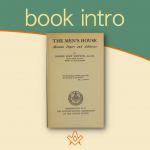 A short introduction to The Men's House, a collection of masonic papers and addresses |
 This is a general survey of Masonic origins, history and philosophy. It was at one time given to every new Mason in Iowa. |
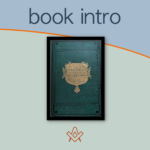 Book Intro - The Discrepancies of Freemasonry Written almost 150 years ago, this book contains wisdom still relevant today. |
 Book Intro - The Principles of Masonic Law "The first great duty, not only of every lodge, but of every Mason, is to see that the landmarks of the Order shall never be impaired". |
 Published in 1911, this fascinating book is equally relevant for the 21st century Mason with an interest in the more mystical side of Freemasonry. |
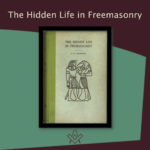 Book Intro - Hidden Life of Freemasonry Introduction to The Hidden Life in Freemasonry (1926) by Charles Webster Leadbeater |
 Book Intro - The Symbolism of Freemasonry Introduction to a classic masonic book; The Symbolism of Freemasonry: Illustrating and Explaining Its Science and Philosophy, its Legends, Myths and Symbols. |
 Book Intro - The Meaning of Masonry This is the Introduction to The Meaning of Masonry, a set of essays which discuss the esoteric side of Masonry |
 Book Intro - Illustrations of Masonry Introduction to Illustrations Of Masonry by William Preston (1742-1818) |
masonic knowledge
to be a better citizen of the world
share the square with two brothers

click image to open email app on mobile device
